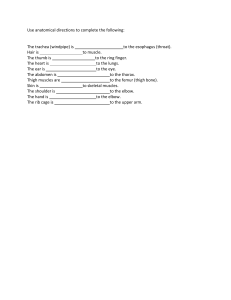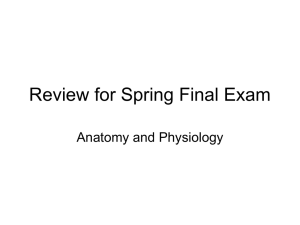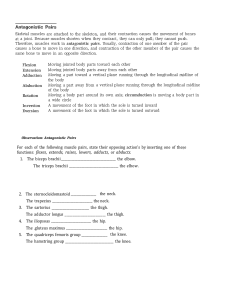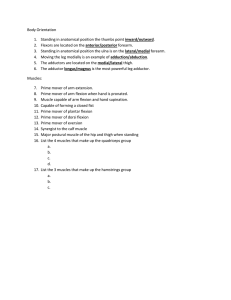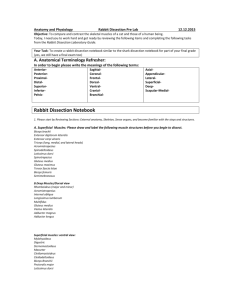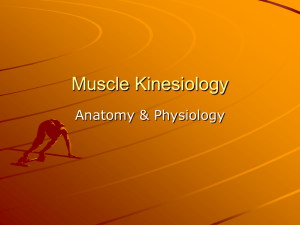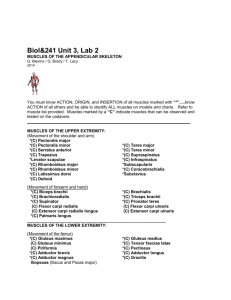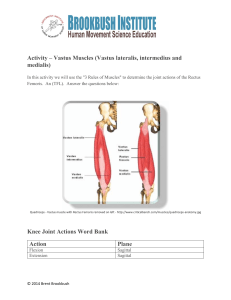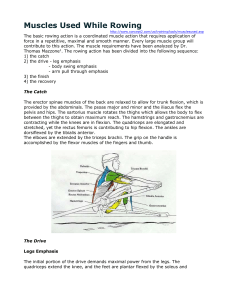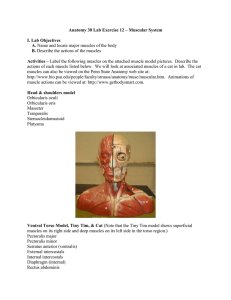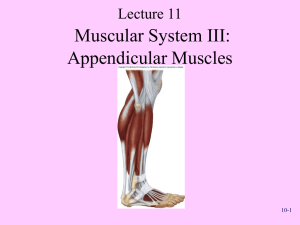THE MUSCULAR SYSTEM
advertisement
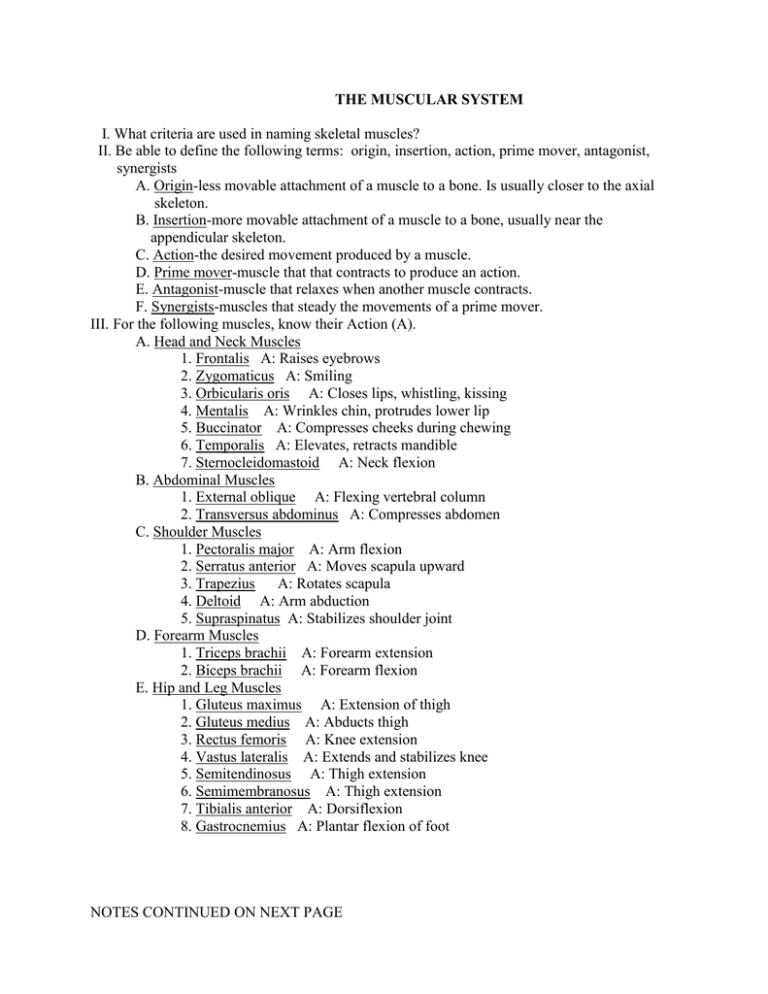
THE MUSCULAR SYSTEM I. What criteria are used in naming skeletal muscles? II. Be able to define the following terms: origin, insertion, action, prime mover, antagonist, synergists A. Origin-less movable attachment of a muscle to a bone. Is usually closer to the axial skeleton. B. Insertion-more movable attachment of a muscle to a bone, usually near the appendicular skeleton. C. Action-the desired movement produced by a muscle. D. Prime mover-muscle that that contracts to produce an action. E. Antagonist-muscle that relaxes when another muscle contracts. F. Synergists-muscles that steady the movements of a prime mover. III. For the following muscles, know their Action (A). A. Head and Neck Muscles 1. Frontalis A: Raises eyebrows 2. Zygomaticus A: Smiling 3. Orbicularis oris A: Closes lips, whistling, kissing 4. Mentalis A: Wrinkles chin, protrudes lower lip 5. Buccinator A: Compresses cheeks during chewing 6. Temporalis A: Elevates, retracts mandible 7. Sternocleidomastoid A: Neck flexion B. Abdominal Muscles 1. External oblique A: Flexing vertebral column 2. Transversus abdominus A: Compresses abdomen C. Shoulder Muscles 1. Pectoralis major A: Arm flexion 2. Serratus anterior A: Moves scapula upward 3. Trapezius A: Rotates scapula 4. Deltoid A: Arm abduction 5. Supraspinatus A: Stabilizes shoulder joint D. Forearm Muscles 1. Triceps brachii A: Forearm extension 2. Biceps brachii A: Forearm flexion E. Hip and Leg Muscles 1. Gluteus maximus A: Extension of thigh 2. Gluteus medius A: Abducts thigh 3. Rectus femoris A: Knee extension 4. Vastus lateralis A: Extends and stabilizes knee 5. Semitendinosus A: Thigh extension 6. Semimembranosus A: Thigh extension 7. Tibialis anterior A: Dorsiflexion 8. Gastrocnemius A: Plantar flexion of foot NOTES CONTINUED ON NEXT PAGE V. What are the preferred sites for intramuscular injections? A. Deltoid B. Vastus lateralis C. Gluteus medius VI. Know the clinical terms at the end of Chapter 10.
